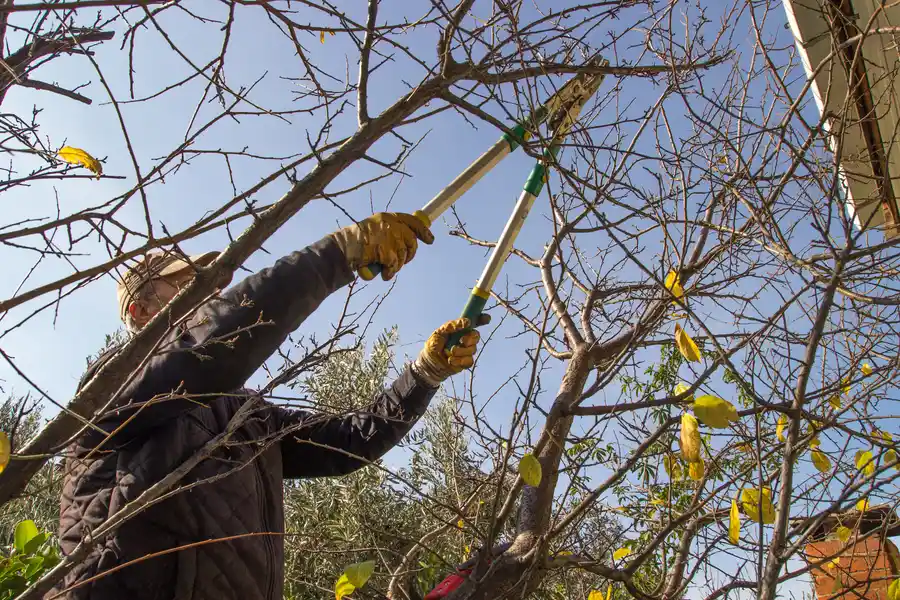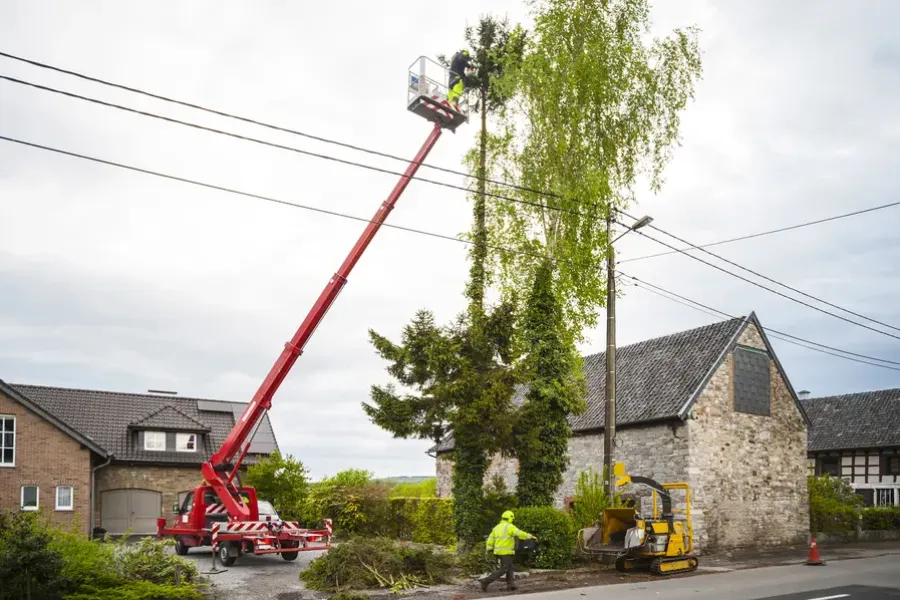The Importance of Gentle Tree Care
Caring for trees is crucial for maintaining a healthy landscape. Proper tree trimming can improve their growth and appearance without causing damage. Learning how to trim trees carefully helps preserve their health, allowing them to thrive. This guide will show you how to manage this process effectively while keeping the trees safe and beautiful.

Understanding Tree Growth
Trees grow in unique ways, and understanding this growth is key to avoiding harm when trimming. Each branch plays a role in the tree’s overall structure and health. Before you start cutting, knowing how trees heal and grow helps you trim them correctly. Trees repair themselves naturally, so careful cuts encourage healthier growth over time.
When to Consider Professional Help
In some cases, using a tree trimming service is wise. Professionals know the ins and outs of safe tree care. They bring expertise that might be needed for large or complex trees. If you’re dealing with tall branches or unsure about how to make precise cuts, consulting experts ensures the job is done right without risk to your trees.

Choosing Tools for the Job
Selecting the right tools makes a big difference in tree trimming. Good-quality shears, loppers, and saws help make clean cuts. Clean cuts are important because they heal better and faster. If you’re new to trimming, consider working with someone experienced who can guide you on tool use. Remember, sharp tools reduce injury risks both to you and the tree itself.
Basic Tree Trimming Techniques
Learning basic techniques helps you trim safely and effectively. Start by removing dead or diseased branches first. Focus on branches that cross each other as they can cause damage over time. Make your cuts at an angle, close to the branch collar (the area where the branch meets the trunk). This method promotes proper healing and strong regrowth.
- Identify dead or unhealthy branches
- Use sharp, clean tools
- Avoid cutting too close to the trunk
- Focus on shaping for balance and light exposure
Common Mistakes in Tree Trimming
Avoid common mistakes to ensure tree health. Over-trimming can lead to stress and disease. Cutting too much at once removes vital leaves needed for photosynthesis. Also, avoid leaving stubs – this prevents proper healing and invites pests or infection. Always aim for clean, strategic cuts for the best results.
Benefits of Proper Trimming
Properly trimmed trees offer many benefits. They not only look better but also stay healthier longer. Well-maintained trees produce more flowers and fruit if applicable. Additionally, they provide better shade and require less maintenance over time. Healthy trees add value to any property, making them a worthy investment.
Guidelines for Seasonal Trimming
Knowing when to trim is as important as knowing how. Different seasons offer different benefits for tree trimming. Most trees benefit from pruning during late winter or early spring before new growth begins. During these times, it’s easier to see the structure without leaves in the way. Avoid trimming in extreme heat or cold as it may stress the tree further.
Final Tips for Successful Tree Care
Trimming trees without harming them requires patience and knowledge. Always prioritize safety for both you and your trees. If uncertain, consult a professional service like those in Tomball, TX who can handle complex tasks safely. Contact De Leon Tree Services at (346) 770-4157 for expert advice tailored to your specific needs.

